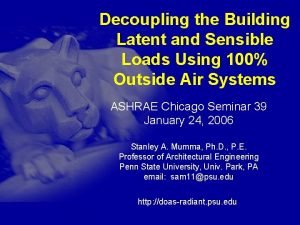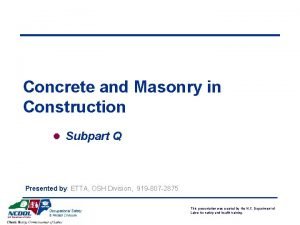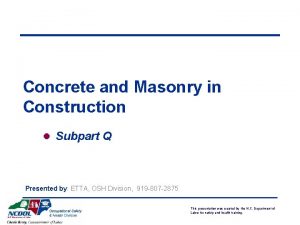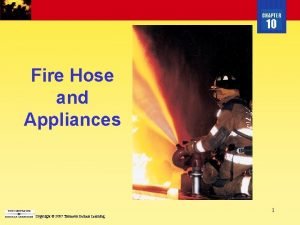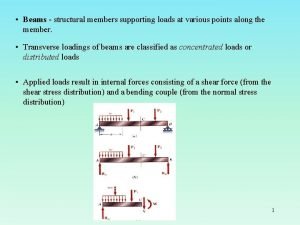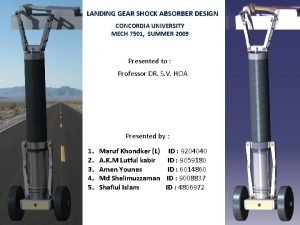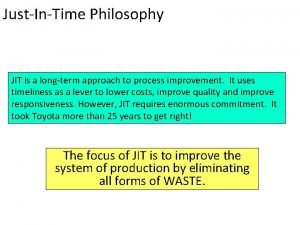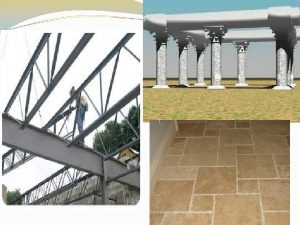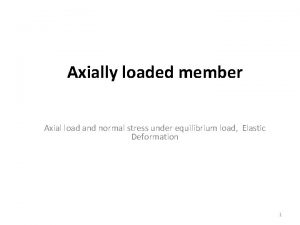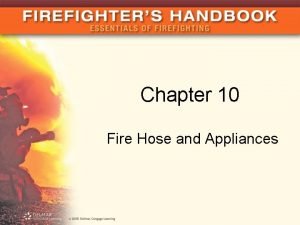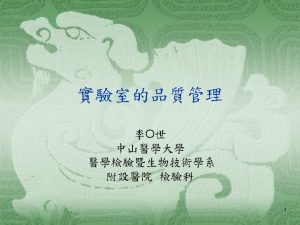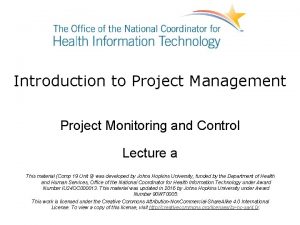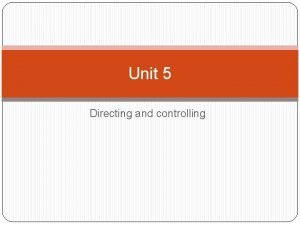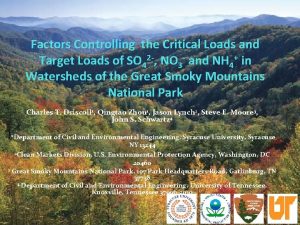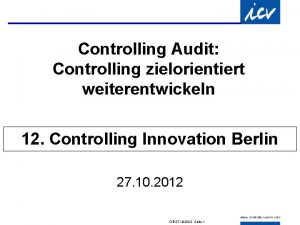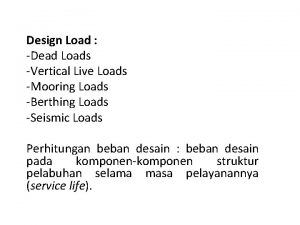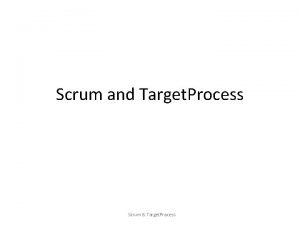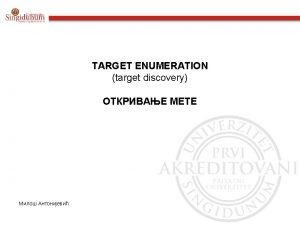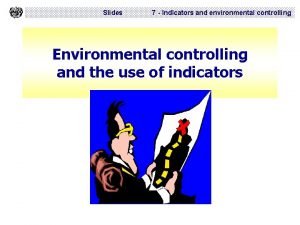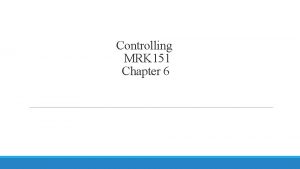Factors Controlling the Critical Loads and Target Loads










































- Slides: 42

Factors Controlling the Critical Loads and Target Loads of SO 42 -, NO 3 - and NH 4+ in Watersheds of the Great Smoky Mountains National Park Charles T. Driscoll 1, Qingtao Zhou 1, Steve E. Moore 2, John S. Schwartz 3 1 Department of Civil and Environmental Engineering, Syracuse University, Syracuse NY 13244 2 Great Smoky Mountains National Park, 107 Park Headquarters Road, Gatlinburg, TN 37738 3 Department of Civil and Environmental Engineering, University of Tennessee, Knoxville, Tennessee 37996 -2010

2 Outline �Background �Objectives �Approach �Results �Examples of model simulations for GRSM watersheds �Analysis of historical acidification and recovery �Comparison between GRSM and the Adirondacks �Park-wide extrapolation �Conclusions

Great Smoky Mountains National (GRSM) Park 3

GRSM Water Resources Streams: 3, 404. 4 km of streams (~2, 115. 5 miles) ranging from 1 st – 6 th order Wetlands: Hundreds of riverine, pond, forest/shrub and emergent wetlands that are each ecologically significant and typically host rare communities and species (USFWS) Fish: Over 60 species in 12 different families – includes 3 Federal T&E species Aquatic Invertebrates: Over 900 species with 14 species new to science 4

GRSM Parkwide Water Quality Sampling Design 1993 Water Quality Monitoring Plan Original Sample Sites (N=367) 5

GRSM Parkwide Water Quality Sampling Design Reduced to 32 sites bi-monthly in 8 watersheds and 11 sites biannually in one watershed (Hazel Creek) (Odom 2003). Current Sample Sites (N=43) N 6

Stream Chemistry Results and Trends 303 d Listing • In 2006, 12 streams representing 42 miles (67 km) were listed on the Tennessee 303 d list due to low stream p. H (<6. 0) • Identified & listed only streams outside of Anakeesta influence • 3 impaired streams modeled Inadu Creek Otter Creek Rock Creek Copperhead Branch Buck Fork Cannon Creek Lowes Creek Road Prong Goshen Prong Unnamed trib Eagle Rocks Prong Shutts Prong 7

8 Objectives �To assess the response of streams and soils in the GRSM to past and potential future changes in the acidic deposition. �To establish the Target Loads (TL) and Critical Loads(CL) for N and S deposition for watersheds of the GRSM. �To explore the factors that control the critical loads in the GRSM. �Inform the process to develop a Total Maximum Daily Load (TMDL) for acidity for the GRSM and elsewhere.

9

10 10 Approach Wet Deposition Dry Deposition Pn. ET Water balance Photosynthesis Living biomass Litterfall Net Mineralization Climatic Data • Solar radiation • Precipitation • Temperature Atmospheric Chemistry Carbon dioxide Uptake a Sh Ozone w llo BGC • Aqueous reactions • Surface reactions • Cation exchange • Adsorption • Humic binding • Aluminum dissolution/precipitation Weathering w lo rf e at w BGC – Surface water Aqueous reactions Deep water flow

11 Data Sets Used to Apply Pn. ET-BGC Meteorological data • Air temperature (max & min) (°C) • Precipitation (cm) • Solar radiation (mmol/m 2 -s) Deposition data • Wet deposition • CASTNet (Dry to wet ratio) • Throughfall (Dry to wet ratio) Vegetation data • Vegetation type • Disturbance history Soils data • Exchangeable cations • Adsorbed sulfate • Soil properties (soil, mass, WHC, CEC)

12 Pn. ET-BGC Model Outputs Surface water • Discharge • chemistry (SO 42 -, NO 3 -, NH 4+, DOC, Ca, Al…) • Solute fluxes Soil • Concentrations (SOC, N, Ca, Al…) • Soil pools • Soil transfers (cation exchange, anion adsorption, mineralization, nitrification, plant uptake…) Vegetation • Biomass (foliage, wood, roots, NPP, NEP) • Vegetation pools (C, N, Ca…) • Vegetation transfers (litter fall, nutrient uptake, foliar leaching…)

13

Approach: The Criterion of Choosing Different Sites in GRSM Study sites in block units Block Basin Area km 2 (ac) Elevation m (ft) Anakeesta 1 <10 (<2471) <1000 (3281) >10% 2 <10 (<2471) >1000 (3281) >10% 3 <10 (<2471) <1000 (3281) None 4 <10 (<2471) >1000 (3281) None 5 10 -20 (2471 -4942) <1000 (3281) >10% 6 10 -20 (2471 -4942) >1000 (3281) >10% 7 10 -20 (2471 -4942) <1000 (3281) None 8 10 -20 (2471 -4942) >1000 (3281) None 14

Watershed Block Design for Monitoring • Stratified GRSM watersheds into block design based upon: watershed size (<10 km 2 or 10 -20 km 2), elevation (> or < 1, 000 m) and percent Anakeesta (0% or >10%) • Block design captured nearly 80% of watersheds (remainder <1 or>20 km 2) 15

Biophysical and Chemical Characteristics of Different Watersheds 16 Elevation m (ft) Watershed areas km 2 (ac) Disturbance Noland Divide 1798 (5899) 0. 174 (43) Balsam Wooly Adelgid SF 44. 3 Indian Camp Creek 1205 (3953) 6. 31 (1559) Land disturbance HD 42. 1 16. 9 Walker Camp 1168 (3832) 4. 24 (1048) None HD 38 -13. 3 Goshen Prong 1046 (3432) 7. 29 (1801) Logging HD 21. 2 19. 3 Lost Bottom 1000 (3281) 5. 15 (1273) Land disturbance HD 7. 7 59. 2 Left Prong Anthony 909 (2982) 1. 61 (398) None SF 23. 4 35. 4 Pretty Hollow 903 (2963) 11. 18 (2763) Land disturbance HD 16. 6 46. 1 Cosby Creek 783 (2569) 5. 78 (1428) Land disturbance HD 38. 2 36. 8 Sugar Fork 780 (2559) 2. 14 (529) Land disturbance HD 3. 7 86. 3 Cannon Creek 751 (2464) 4. 19 (1035) Land disturbance HD 20. 6 17. 1 Thunderhead 664 (2178) 11. 26 (2782) Fire HD 14. 4 33. 2 Mill Creek 545 (1788) 10. 92 (2698) Land disturbance HD 56. 1 17 Vegetation NO 3 - (µeq/L) ANC (µeq/L)

17 Site Elevation (m) Area (km 2) Vegetation %Anakeesta Noland Divide 1798 0. 174 SF No Indian Camp Creek 1205 2. 17 HD No Walker Camp 1168 10. 73 HD 81. 89% Goshen Prong 1046 7. 29 HD 26. 83% Lost Bottom 1000 5. 15 HD No Left Prong Anthony 909 1. 61 SF No Pretty Hollow 903 11. 18 HD No Cosby Creek 783 5. 78 HD No Sugar Fork 780 2. 14 HD No Cannon Creek 751 4. 19 HD 0. 64% Thunderhead 664 11. 26 HD 34. 73% Mill Creek 545 10. 92 HD No Length ANC Impaired of record (μeq/L) 19912008 19932003 19942009 19942003 19932009 19962009 19942003 19962009 24. 8 17. 82 303 d -13. 85 20. 78 303 d 50. 34 34. 85 47. 03 37. 33 90. 32 16. 25 303 d 33. 22 46. 08

Testing and Evaluation of Model Performance Comparison with measured values • • Discharge Stream chemistry Soil chemistry Ecosystem biogeochemical measurements Performance statistical metrics • Normalized Mean Error (NME) • Normalized Mean Absolute Error (NMAE) Sensitivity/uncertainty analysis Comparison with other models • Comparison with MAGIC 18

19 Results: Model Performance • No significant differences between measured to simulated (modeled) results

20 Results

21

Model Predicted Element Fluxes (1993 -2008) 22 NH 4 -N (kg/ha-yr) NO 3 -N (kg/ha-yr) SO 4 -S (kg/ha-yr) Ca (kg/ha-yr) Deposition 4. 08 14. 3 29. 1 1. 31 Weathering 0 0 1. 2 5. 4 Mineralization 33. 3 0 13. 1 34. 0 Nitrification -23. 6 0 0 Plant Uptake -12. 8 -31. 8 -13. 5 -48. 8 0 -19. 8 12. 5 -7. 6 -10. 3 -18. 5 Sorption Drainage losses 0 Note: Positive=Input; Negative=Output

Comparison of Modeled and Measured Fluxes NH 4 -N (kg/ha-yr) 23 NO 3 -N (kg/ha-yr) IFS UTM Model 0. 28 4. 2 4. 08 16. 8 12. 5 14. 3 Weathering 0 0 0 Mineralization 33. 3 0 Nitrification -23. 6 23. 6 Plant Uptake -12. 8 -26. 4 -31. 8 Sorption 0 Drainage losses 0. 3 0 -9. 92 -7. 6 Throughfall Deposition

Comparison of Modeled and Measured Fluxes SO 4 -S (kg/ha-yr) 24 Ca kg/ha-yr) IFS UTM Model Throughfall Deposition 40 32 29. 1 18. 76 18. 0 17. 6 Weathering 1. 2 5. 4 Mineralization 13. 1 34. 0 Nitrification 0 -3. 5 -13. 5 -8. 65 -48. 8 Sorption -19. 8 12. 5 Drainage losses -10. 24 -10. 3 -16. 54 -18. 5 Plant Uptake

25

26

27

28 Result: Predictions of future response of stream ANC to different scenarios of nitrate, ammonium and sulfate deposition in Noland Divide Watershed


30 Differential ANC Response to Sulfate vs. Nitrate Deposition DCL 2050 0. 00058 0. 22 CL 2200 0. 0041 0. 52

31 Results

32 Historical Acidification

33 Recovery

How Does the Recovery of GRSM Compare with Adirondack Watersheds? Recovery Target load (2050) Critical Load (2200) Regions Adirondack 0. 6 (± 0. 2) -0. 2 (± 0. 1) 1. 2 (± 0. 4) 0. 1 (± 0. 18) GRSM 0. 3 (± 0. 1) 0. 7 (± 0. 3) 0. 6 (± 0. 1) 1. 9 (± 0. 4) 34

Extrapolation of Future Deposition Projections Park-Wide �Utilize empirical relationships from model results from 12 watershed study sites �Utilize stream survey data for the GRSM 35

36 site Current ANC (µeq/L) ANC in 1850 (µeq/L) Current Deposition (meq/m 2 -yr) Target ANC Sulfate + Nitrate Deposition (meq/m 2 -yr) Sulfate + Nitrate Deposition (meq/m 2 - yr) ANC=0 (µeq/L) ANC = 20 (µeq/L) ANC =50 (µeq/L) Noland Divide 4. 3 27. 4 201 91 0 0 Goshen Prong 19. 3 58. 9 197 76 0 0 Cosby Creek 36. 9 93. 1 165 370 130 0 Lost Bottom Creek 59. 2 89. 8 103 600 390 80


38 Conclusions �The stream ANC in the GRSM increases to a greater extent in response to decreases in NO 3 - deposition than to decreases in SO 42 - or NH 4+. �There is a relationship between historical acidification and potential watershed recovery with changes in NO 3 - plus SO 42 - deposition and historical ANC (1850).

39 Conclusions �Surface water ANC responds more to changes in NO 3 - deposition in the GRSM, but more to changes in SO 42 - deposition in Adirondacks. �A relationship exists between current ANC and the level of deposition needed to achieve a target ANC. This relationship could be utilized with stream survey data for the GRSM to develop a Park wide TMDL.

40 Future Activities �Complete model testing for intensive study sites �Model testing p. H-ANC relationships �Future scenario testing for TMDL sites �Comparison of results with MAGIC results �Extrapolation of model result to entire Park �Project communication activities.

41 Questions?

42
 Critical semi critical and non critical instruments
Critical semi critical and non critical instruments Semicritical
Semicritical Primary target market and secondary target market
Primary target market and secondary target market Compare non-critical readers with critical readers.
Compare non-critical readers with critical readers. Abiotic factors in an ecosystem
Abiotic factors in an ecosystem Abiotic vs biotic factors
Abiotic vs biotic factors Abiotic factors and biotic factors
Abiotic factors and biotic factors Factors of 18
Factors of 18 7-1 factors and greatest common factors
7-1 factors and greatest common factors Gcf of 25 and 30
Gcf of 25 and 30 Entrepreneurial venture
Entrepreneurial venture Feasibility study chapter 6
Feasibility study chapter 6 Sensible loads
Sensible loads Handles on these must not extend beyond
Handles on these must not extend beyond Protruding reinforced steel must be guarded
Protruding reinforced steel must be guarded Deploying a flat load hose
Deploying a flat load hose Mechanical loads on human body
Mechanical loads on human body The pipe assembly supports the vertical loads shown
The pipe assembly supports the vertical loads shown The structural members supporting loads at various points.
The structural members supporting loads at various points. Archimedes principle
Archimedes principle A limited access zone must
A limited access zone must Landing gear shock absorber design
Landing gear shock absorber design Uniform workstation loads
Uniform workstation loads Static structure analysis
Static structure analysis Members used to carry wall loads over wall openings
Members used to carry wall loads over wall openings Soderberg equation
Soderberg equation Approximate analysis
Approximate analysis Saint venant principle
Saint venant principle Racking stress of container
Racking stress of container Unit load example
Unit load example Reverse horseshoe hose load
Reverse horseshoe hose load Staffing and directing in management
Staffing and directing in management Planning organising staffing directing controlling
Planning organising staffing directing controlling Controlling idea adalah
Controlling idea adalah Who are managers?
Who are managers? What are extraneous variables
What are extraneous variables Whats a good topic sentence
Whats a good topic sentence Staffing and controlling
Staffing and controlling Planning staffing controlling organizing directing
Planning staffing controlling organizing directing Planning organizing staffing directing controlling
Planning organizing staffing directing controlling Example of coherence
Example of coherence Monitor and control project work
Monitor and control project work Directing and controlling
Directing and controlling












